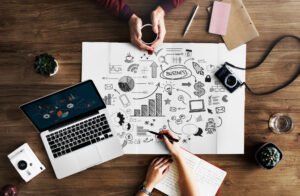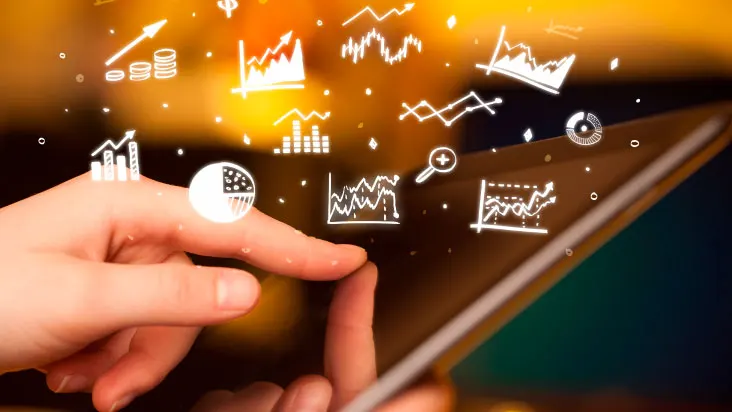The customer funnel depicts a customer's entire path, from initial awareness and interest to consideration and conversion. It extends beyond the purchase stage, encompassing ongoing engagement and advocacy.
A sales & marketing leadership programme can help aspirants learn the basics of the customer journey and how to use customer funnelling to nurture leads and close deals.
Advantages of Customer Funnelling
- Simple and clear understanding: The customer funnel is a simple concept that can be effectively tracked. It provides a straightforward visual representation of the customer journey.
- Attracting a broad audience: It helps draw the attention of a large number of people to your company. As prospects progress through the stages, qualified leads are generated.
- Building target groups: It enables the gradual formation of target groups, starting with a broad audience. It filters out less interested individuals, leaving those with a higher potential for conversion.
- Tailored marketing: It guides marketers in tailoring their efforts to specific target groups. Addressing each segment's unique needs and preferences enhances the overall effectiveness of marketing campaigns.
Consumer Journey
A client or consumer journey refers to interactions, offers, and channels guiding prospects or clients through your product/service range.
It can vary in duration depending on the complexity of your offerings. Some journeys may be brief, while others may be more extensive due to multiple product options or service levels.
The consumer journey involves:
- Funnelling: Creating structured pathways guiding prospects towards specific actions or conversions.
- Email communication: Using personalised and targeted email campaigns for nurturing and maintaining ongoing communication.
- Text messages: Engaging prospects and clients through direct and timely text messaging platforms.
- Voicemails: Leave thoughtful voicemails to follow up and provide additional information or offers.
- Website presence: Establish an informative and interactive website, a central hub for prospects to explore your offerings.
Essential Stages of the Consumer Journey
Let's explore the consumer journey stages through an example of someone looking to buy a new smartphone:
1. Awareness
The individual realises their current smartphone is outdated and doesn't meet their needs anymore. They search for the latest smartphone models online and read reviews and articles about top brands and features.
2. Consideration
They narrowed their choices to two leading smartphone brands following extensive research. They compare each model's specifications, prices, and customer feedback to make an informed decision.
3. Decision
The person purchases the smartphone from Brand X due to its excellent camera features, positive customer reviews, and a limited-time discount offer.
4. Retention
After using the smartphone for a few weeks, the individual receives personalised emails from the brand, offering tips on optimising the device's performance and exclusive access to new software updates. It enhances their overall experience and loyalty to Brand X.
5. Advocacy
Impressed with the smartphone's performance, the person shares their positive experience on social media, recommending the product to their followers. One of their friends sees the post and asks for a direct link to purchase the same smartphone.
The example shows how a consumer progresses through the journey stages, from becoming aware of the need to purchase, examining possibilities and finally becoming an advocate for the company.
How to Improve the Consumer Journey?
Sustaining successful marketing outcomes requires continuous optimisation to meet evolving consumer expectations.
Regularly reviewing and refining your consumer journey is essential to ensure a seamless and satisfying experience.
Here are the key stages to focus on:
Stage 1: Reach
Effectively target your audience by leveraging customer data, including voluntarily shared zero-party data.
Create audience personas for targeted ads on platforms like Google and social media.
You'll build a more robust and engaged contact list by reaching the right people. Remember to collect only necessary data and avoid gathering unnecessary information.
Stage 2: Acquisition
Prevent customer loss by avoiding irrelevant messaging to newly acquired customers. Impersonal and generic email marketing can lead to a high customer unsubscribe rate.
Instead, ask customers about their preferences or offer a self-service content model for topic selection. Maintain customers' trust in your brand by avoiding irrelevant messages.
Stage 3: Conversion
The conversion stage is where marketing and customer service converge. Collaborate between departments to ensure a smooth customer experience.
Implement channels like live chat to remove obstacles to purchasing and gather valuable data. Identify areas for website improvement and address frequently asked questions.
Use consumer data to create post-chat email automation, enhancing overall experiences and fostering robust and enduring customer relationships.
Stage 4: Retention
Leverage consumer data for personalisation during the post-purchase phase. Focus on collecting data that enables tailored product recommendations and content to keep customers engaged and retained.
Combine consumer interests, purchase history, and segmentation techniques like eRFM or lead scoring to create unique pathways for highly targeted customer segments.
Personalise marketing messages and offers based on customer data to drive relevance and conversions and cultivate consumer loyalty.
Stage 5: Loyalty
The loyalty stage aims to make consumers feel valued and deepen their connection with your brand.
Optimise earlier stages of the consumer journey to establish trust and demonstrate commitment to responsible data usage and privacy.
Invite loyal customers to participate in review panels or join loyalty programmes, encouraging a more vital investment in your brand.
This approach increases the likelihood of customers choosing your brand over competitors.
Customer Funnel vs Consumer Journey
Some of the primary differences between the two are:
| Customer Funnel | Consumer Journey | |
| Definition | A marketing model outlining the steps customers take to make a purchase decision and become a customer. | A holistic view of a consumer's entire experience with a brand, from the initial awareness stage to post-purchase interactions. |
| Focus | Acquiring new customers and guiding them towards making a purchase. | Understanding and enhancing the overall consumer experience and fostering long-term relationships. |
| Scope | Limited to the stages leading up to a customer's purchase decision. | Encompasses all touchpoints and interactions throughout the customer's relationship with the brand, including the pre-and post-purchase stages. |
| Goal | Conversion of leads into customers. | Building loyalty, customer retention, and advocacy. |
| Marketing Focus | Attracting and converting potential customers. | Creating a seamless and positive experience at each touchpoint, from discovery to advocacy. |
| Importance | Essential for lead generation and sales. | Crucial for building strong customer relationships and fostering brand loyalty. |
Conclusion
Understanding and effectively implementing customer funnelling and consumer journey strategies are crucial for driving business growth and success. Companies can enhance their sales and marketing performance by optimising the customer's path from initial awareness to becoming loyal advocates.
Consider enrolling in Imarticus Learning's Executive Management Programme in Sales & Marketing Leadership programme by IIM Lucknow to kickstart your career in the field.
Visit Imarticus Learning for more information on the IIM L executive programme.







